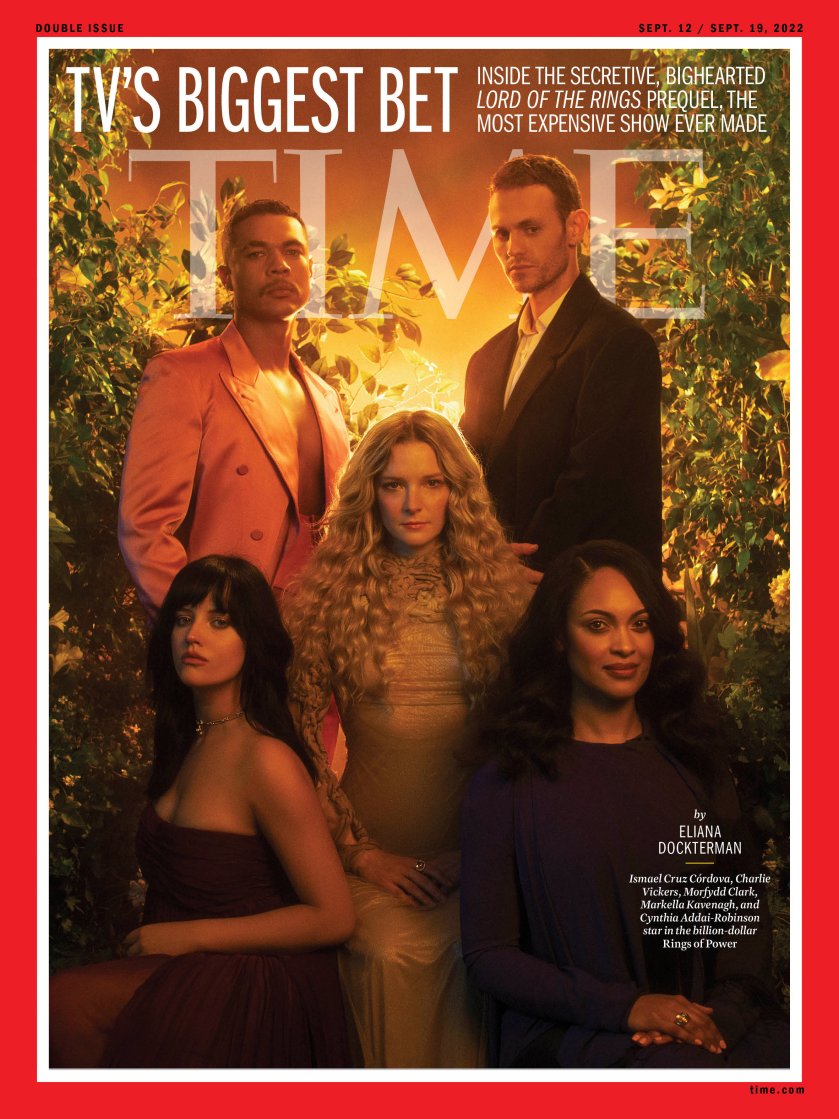
No other series in the history of television has been this sprawling, this cinematic, this massive—or launched with such secrecy under such external pressure.
Tears are streaming down Ismael Cruz Córdova’s chiseled cheekbones. Somehow, hardly anyone notices. I’m at San Diego Comic-Con, halfway through 96 hours spent shadowing the cast and creators of The Rings of Power, Amazon’s highly anticipated Lord of the Rings prequel series. Tomorrow, franchise superfan Stephen Colbert will debut a trailer for the series to 6,500 screaming attendees, many wearing pointy wizard hats. But tonight, at a private dinner, journalists are getting an early preview of the video in a golden faux forest constructed by Amazon for the occasion.
After a day spent among the convention crowd in 80-degree heat, sweaty, sneaker-clad members of the press mingle with actors dressed in cocktail attire: Córdova has chosen a sharp suit with a black leather harness pulled tight across his chest. A 16-person choir and 25-piece orchestra—fronted by a violinist decked out in Middle-earth regalia—perform music from the series.
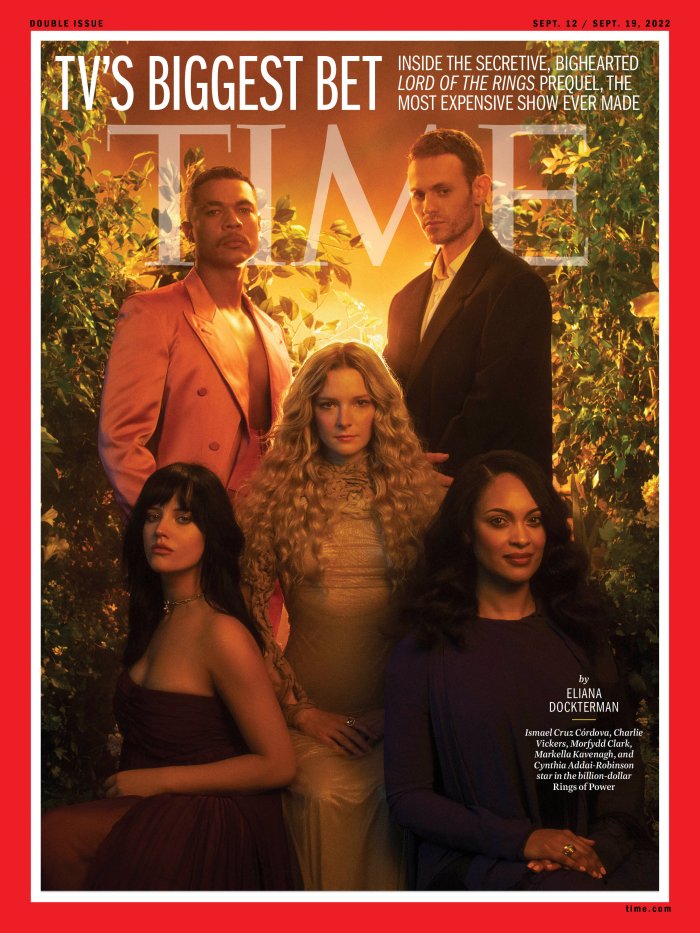
Buy a print of TIME’s The Rings of Power cover here
With ethereal features and perfect posture, Córdova is an ideal choice for a warrior elf named Arondir. The 35-year-old actor had warned me the day before that he teared up several times on the show’s New Zealand set and would likely do so again at Comic-Con. And though he’s heard the score before, the swelling strings add particular drama to the occasion, a lifetime in the making for Córdova, the first person of color to portray one of J.R.R. Tolkien’s elves onscreen. Though the stakes feel particularly high for the actor, he’s far from alone in his elation and anxiety. Nearly every person I encounter, from the cast to the showrunners to the executive producer, seems to teeter on the verge of some cathartic break.
After five years of development, The Rings of Power will finally premiere Sept. 2 on Amazon Prime Video. With a record-setting price tag of $1 billion, it will be the most expensive show ever made. No other series in the history of television has been this sprawling, this cinematic, this massive—or launched with such secrecy under such external pressure. “The jewels of the crown are the big tentpole shows that invite in the whole family,” says Jennifer Salke, head of Amazon Studios. “And this is the crown jewel.”
Read More: The Rings of Power Exclusive: Producer Says Fan Theories About Sauron Are Wrong
A billion dollars may sound like a rounding error for a massive company like Amazon, whose net sales hit $469.8 billion in 2021. But the success of The Rings of Power will also indicate whether the streaming bubble is about to burst. Streamers, particularly those that don’t run ads, must grow their subscriptions to thrive, so they’ve stocked their libraries with new spin-offs, sequels, and prequels to familiar franchises. (See: Disney+’s Star Wars and Marvel shows, HBO’s Game of Thrones and DC series, and Paramount+’s Star Trek universe.) Lord of the Rings is arguably the last piece of highly valuable intellectual property that had not yet been snatched up: Publishers often tout it as the fourth best-selling book in history, behind only the Bible, Mao’s Little Red Book, and the Koran. Jeff Bezos, a Tolkien aficionado, led the charge at Amazon to acquire the rights to The Hobbit and The Lord of the Rings for $250 million in 2017.
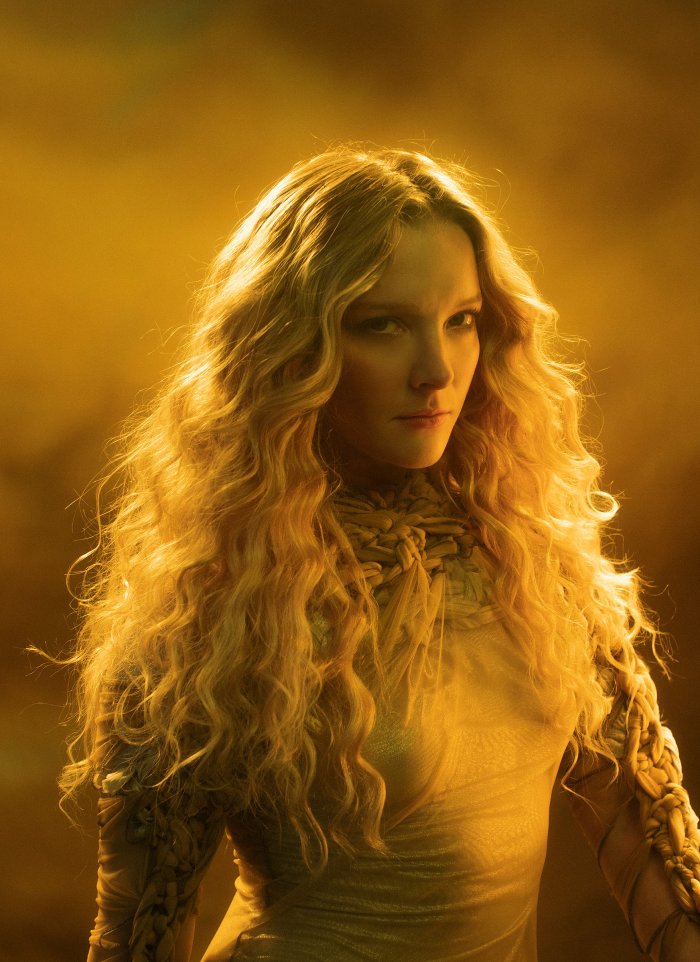
But past interest doesn’t guarantee a hit. The Rings of Power arrives just as industry leader Netflix reports its first slowdown in subscriber growth in the past decade, sending a wave of panic through Hollywood. What’s more, in an era when hyperactive superhero stories that undercut emotional beats with jokes have become the entertainment industry’s most profitable bet, Amazon is gambling with billion-dollar IP by making a big, old-fashioned show that wears its heart on its sleeve—and trusting an unknown screenwriting duo to run it. Based on the two episodes I’ve seen, Rings delivers a sweeping saga. But it faces stiff competition: HBO scheduled the premiere of its Game of Thrones prequel, House of the Dragon, for Aug. 21, just 12 days before The Rings of Power.
Hollywood is all about the bottom line, but everyone involved insists this is, at least in part, a labor of love. Whether the audience is moved to tears, as Córdova was, might just determine if The Rings of Power can make history with more than just its big budget.
Every fellowship needs an unlikely leader—or, in this case, two. Sitting in a hotel suite so vast, it includes a ping-pong table, showrunners J.D. Payne and Patrick McKay barely notice the noisy throng of Princess Leias and Spider-Men clamoring to get their hands on bright green She-Hulk-themed cocktails on the streets of San Diego below. They’re too engrossed in a dialogue about poetic meter in Tolkien: for the show, they wrote different rhythmic structures for each of the different peoples of Middle-earth.
Both men, 41, are tall, blond-ish, and a bit gangly. They first met on the debate team and drama club at a Northern Virginia high school. “We rode the same bus and got beat up by the same bullies,” says Payne. After three years in Hollywood, they started working for Bad Robot, J.J. Abrams’ production company. The duo punched up scripts and labored over several projects, including a script about a silent robot they describe as a cross between Citizen Kane and Iron Giant, and a fourth Star Trek film; none of those movies saw the light of day.
Read More: Exclusive: This Fan-Favorite Character Is Joining the Second Season of Rings of Power
The Lord of the Rings has long been their ur-text. The bespectacled, affable Payne sent out his son’s birth announcement in both English and Elvish. More than once he pauses midconversation to pull out his phone and read a relevant Tolkien quote out loud. McKay, his frenetic, slightly sarcastic counterpart, often jumps in to riff on Tolkien’s wisdom. Spend a few minutes listening to them trip over each another as they geek out over Tolkien, and it becomes clear how they won this particular job despite their scant résumés.
Published in three volumes from 1954 to 1955 by British scholar and World War I veteran J.R.R. Tolkien, The Lord of the Rings revolutionized the high-fantasy genre. A hobbit named Frodo, an unassuming creature with hairy feet, is aided by a fellowship of a wizard, two men, an elf, a dwarf, and three other hobbits as he attempts to carry a magical and corrupting ring created by the villainous Sauron to a volcano so it can be destroyed.
The Fellowship of the Ring, The Two Towers, and The Return of the King established enduring themes—environmentalism, the power of friendship in the face of evil, and how even the smallest person can change the world—that have found their way into megahits like Game of Thrones, Harry Potter, and Stranger Things. In the early 2000s, Peter Jackson adapted the books into a near perfect film trilogy, the last installment of which still shares the record for most Oscars won in a single night. Jackson later split Tolkien’s The Hobbit into yet another three-part film series. Together, the six movies grossed nearly $6 billion worldwide.
Anyone attempting to take on Tolkien would inevitably live in Jackson’s shadow. But that didn’t deter Hollywood: Dozens of writers pitched Amazon on series ideas in 2018. Many conceived origin stories for Tolkien’s best-known characters—like ranger turned king Aragorn and the wizard Gandalf—a popular device employed recently by shows like Netflix’s Ratched and Disney+’s Obi-Wan Kenobi.
Read More: An Extremely Detailed Breakdown of the Rings of Power Trailer
Payne and McKay had a different take: they told the company it was sitting on a gold mine and didn’t even know it. The extensive appendices that appear at the end of The Return of the King serve as a prequel of sorts, outlining the rise of Sauron and creation of the titular rings. As the showrunners put it, Tolkien had left the stars. They just needed to make constellations. “We beat out people they would have felt more comfortable giving it to because this was the show,” says McKay.
The duo sketched out a new series that turns the five-minute prologue of Jackson’s Fellowship of the Ring film into five seasons of television set in the Second Age, over 3,000 years before the events of The Lord of the Rings. The evil lord Morgoth has been defeated. Middle-earth is flourishing, but the flaxen-haired elf Galadriel is convinced that Morgoth’s missing servant Sauron is amassing power. Audiences will explore the dwarf mines of Khazad-dûm and the seaside kingdom of Númenor; they’ll encounter harfoots, the nomadic ancestors of hobbits, as well as Isildur, the man who will eventually take the one ring from Sauron but fail to destroy it; and they’ll meet a mysterious stranger—maybe a certain familiar wizard?—who falls from the sky in the first episode.
When McKay and Payne scored the Rings of Power job, their old boss J.J. Abrams offered advice: “Trust your instincts,” he wrote in an email. “But say, ‘I don’t know’ a lot.” So they filled their fellowship with people who did know how to tell an epic story, beginning with fellow Bad Robot alum Lindsey Weber, 42, who has handled Star Trek and Cloverfield productions, as their executive producer. They used the practical and digital visual-effects companies co-founded by Jackson, Weta Workshop and Weta FX, and consulted with the Tolkien estate, particularly his grandson Simon Tolkien. J.A. Bayona, who helmed Jurassic World: Fallen Kingdom, directed the first two episodes, and Bryan Cogman, who worked on Game of Thrones, came on as a consulting producer to offer his experience with episodic television.
In the writers’ room, Payne and McKay began every day with a Tolkien quote and—in a rare move by Hollywood’s standards—ended by telling each writer what a good job they’d done, according to their staff. They are a mix of Tolkien obsessives and newbies, whom the creators challenged to find real emotional stakes in a narrative that could easily fall back on glib references to fan-favorite characters. So expect twists on what you think you know about Lord of the Rings: the identity of Sauron, for instance, may not be who you expect. “Amazon is taking a humongous swing betting on us, who might not, from the outside, look like the safest bet,” says McKay. “That’s good, I think. Storytelling is too safe these days.”
When McKay and Payne started developing the show in 2018, they declared the contemporary TV landscape “peak bleak.” Succession had just debuted, and its characters were reveling in finding new ways to torture one another. Game of Thrones drew in viewers with its weekly twists, usually in the form of mass murder, beheading, or rape. “It’s like, How do you top the most debased thing you can do?” says McKay. “Sometimes that’s really good in certain shows, but it’s also relentless.”
Thrones aired pre-pandemic and pre-insurrection. Bighearted comedies Ted Lasso and Only Murders in the Building have become surprise hits in the intervening years for a reason. In the face of House of the Dragon’s glossy cynicism and Marvel’s winking nihilism, there’s a radical sincerity and moral clarity to The Lord of the Rings that may resonate with today’s beleaguered viewers—if Amazon can manage to draw audiences’ attention in a crowded landscape.
Read More: Game of Thrones: How They Make the World’s Most Popular Show
In the years since Amazon won the bidding war for the rights to Tolkien’s key works, Disney, Apple, NBC, Paramount, and HBO have all launched streaming services. And even though around 168 million Americans have a Prime membership, according to analysts, the streamer is rarely mentioned in the same breath as Netflix or Disney+. New seasons of Amazon’s Emmy-laden ’50s-set comedy The Marvelous Mrs. Maisel and the bloody superhero parody The Boys consistently rank in the Top 10 of Nielsen’s most-streamed shows, but neither boasts the generation-spanning audience the streamer wants with Rings.
To compete for eyeballs and Emmys, Amazon spent about $468 million filming the first eight-episode season. (While Amazon wouldn’t release the number, the New Zealand government shared documents with TIME that confirmed the studio’s expenditures.) By comparison, HBO’s Game of Thrones cost a reported $90 million in its final season, and the latest season of Netflix’s Stranger Things $270 million. Amazon has since invested hefty marketing costs, including a Super Bowl slot that cost an estimated $13 million, according to marketing experts. (It set a record for the most-watched Super Bowl trailer online within 24 hours.) With production of the second season beginning in October, Amazon will race past the $1 billion mark.
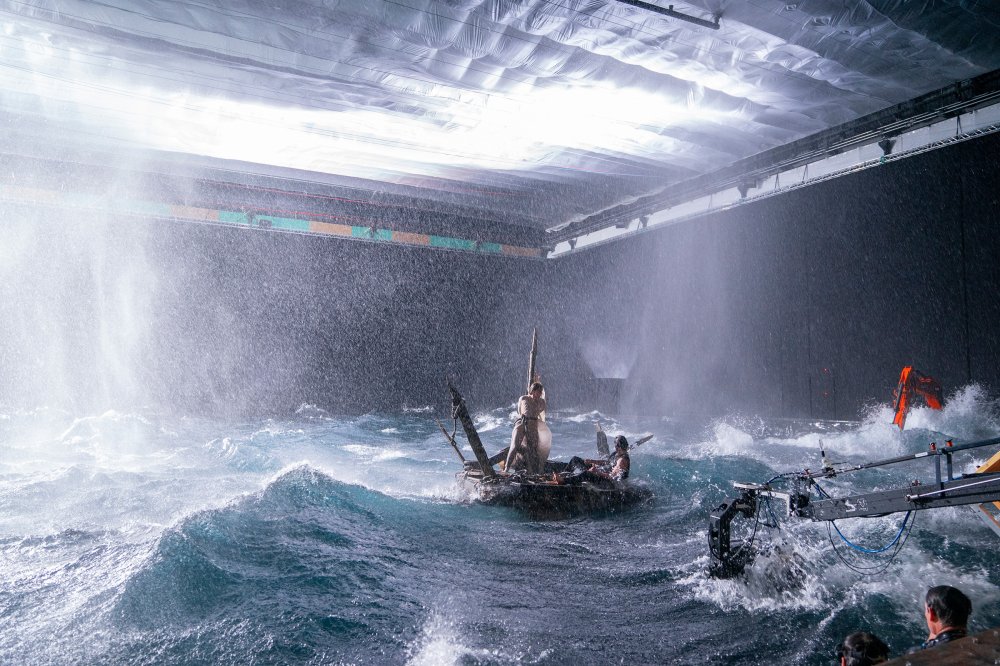
For the second quarter of 2022, Amazon reported a $2 billion loss, but its stock nonetheless shot up: the company had cited revenue gains specifically in advertising and brand partnerships for The Rings of Power and Thursday Night Football, which Amazon Prime will stream exclusively this fall. (The Rings of Power, Salke hastens to say, will not air ads.) It’s unclear if those side deals will offset the show’s massive cost. The current level of streaming spending across the industry is not sustainable: Netflix and Warner Bros. Discovery both recently announced cuts.
Luckily for Amazon, streaming is just a small part of its business. Over the years, Amazon has gobbled up the likes of Audible for $300 million, Zappos for $1.2 billion, and, recently, Roomba vacuum company iRobot for $1.7 billion. Amazon’s real objective is to drive more customers to pay for an annual Prime membership. Streaming analyst Dan Rayburn argues that people looking to cut down on streaming bills are more likely to dump Netflix than Prime because they need their Prime account to order toilet paper. “Customers are constantly subscribing when there is a show they want to watch and then unsubscribing when they finish,” he says. In 2021, Bezos announced that more than 175 million of Prime’s roughly 200 million members had streamed shows and movies on the platform that year, compared with, in 2022, Netflix’s 220.7 million, Disney+’s 152.1 million, and HBO Max and Discovery+’s combined 92.1 million subscribers. And unlike any of those companies, Amazon could, according to Rayburn, sell merchandise for its hit series through its platforms. (Click to order elf ears!)
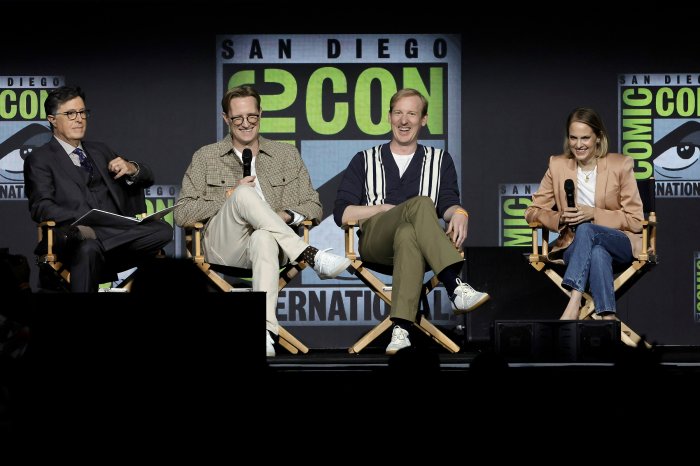
But Amazon has run into some trouble convincing die-hard Tolkien fans that The Rings of Power will live up to their lofty expectations. The morning before I was serenaded by Amazon’s choir, I eavesdropped on anxious Lord of the Rings fans at Comic-Con. Amazon had released little footage, and these Tolkien podcasters and bloggers worried the company might ruin their favorite story for the sake of a cash grab. A fan-led panel featured a slide depicting greedy villain Gollum sitting atop the Amazon logo counting money.
Bezos wants to dissuade fans from thinking the studio’s motives are purely economic. “Middle-earth is such a beloved world, and telling the story of the forging of the Rings of Power is a privilege and a responsibility. I hope we do Tolkien’s work justice,” he told TIME exclusively in an email. “It goes beyond making a commercially successful show. Everyone working on the show read these stories as kids and our hearts are in it.”
In part, Amazon doesn’t want to spoil the story. The Rings of Power was shrouded in unprecedented levels of secrecy. When cast members signed on, they hadn’t seen a script. Many of them weren’t even told which character they were auditioning for. Production told Córdova he was auditioning to portray an “Aragorn-type man.” “They flew me out to New Zealand, and the night before my final read, they told me, ‘Actually, you’re playing an elf,’” he says. “It started to make sense because I was like, ‘Why does this man love trees so much?’”
Read More: 11 Rings of Power Secrets We Learned From the Cast and Creators
But an information vacuum breeds nervousness. Some fan concerns are reasonable, like the fact that the show must compress thousands of years of Middle-earth history so that mortal human characters can have full story arcs alongside the immortal ones, like Galadriel. (“You can’t have half your cast die every two episodes,” McKay says.) Others, who came to the story by way of the movies, treat any deviation—like featuring elves with short hair when Jackson’s sported flowing locks—as sacrilege. A few weeks after Comic-Con, Jackson would tell the Hollywood Reporter that Amazon Studios promised to send him scripts and never did. Amazon responded that it had to keep the show thematically (and legally) distinct from the films.
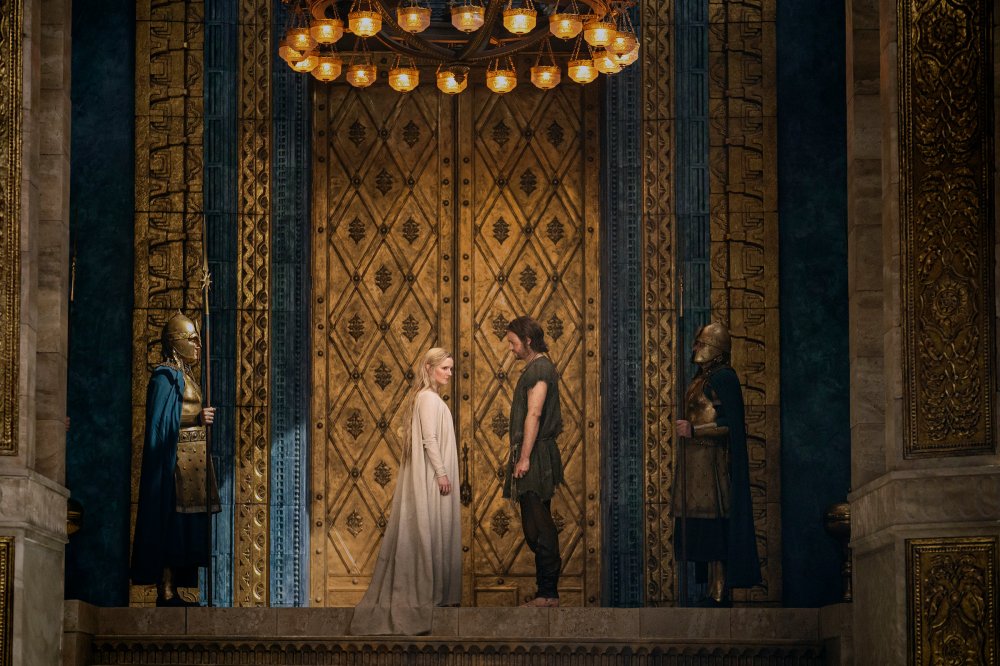
Then there are the real-life trolls who take issue with the fact that Córdova, a Black Puerto Rican man, is playing an elf, and that young Galadriel doesn’t appear “feminine” because she wears armor. Payne has a Tolkien quote at the ready about trolls, “creatures of dull and lumpish nature that had no more language than beasts.” Weber is more direct. “We’re all up for criticism,” she says. “We’re not up for racism.”
Galadriel actor Morfydd Clark, who broke out in 2019 with His Dark Materials and the indie film Saint Maud, casts a skeptical eye on complaints about her character. The Galadriel we meet in Jackson’s films, played by Cate Blanchett, is a serene elder stateswoman nearing retirement, but Clark’s version is more youthful and stubborn. Clark, 32, who speaks with a Welsh lilt and bears a striking resemblance to Blanchett, wants to explore how Galadriel evolves as she ages—and center that journey in what’s been a male-dominated story. “I didn’t read the books and think, ‘I wish there were more female characters,’ because I just took it as given that that was the way things were,” she says. “I’m standing on the shoulders of women who spilt metaphorical blood to get to this point. I hope young people, should they watch this, will think, ‘This is just the way things are.’”
Córdova always knew something was missing from the Jackson films he adored. He grew up in a small mountain town in Puerto Rico and harbored a childhood dream of playing an elf. “I didn’t see myself represented. And when I said, ‘I want to be an elf,’ people said, ‘Elves don’t look like you,’” he says. “When I heard about the character on the show, it felt like a mission.”
Córdova was initially rejected for the role. Several times. But the actor, who has appeared on shows like Ray Donovan and The Undoing, auditioned again and again over seven months. When he finally got the call that he’d landed the part—news dispatched to him in secret code, of course—he screamed for joy in the streets of New York City.

Many of the actors suffered through a long audition process. Charlie Vickers, 29, plays a new human character named Halbrand and estimates he auditioned eight times in six months. Cynthia Addai-Robinson, 37, was eventually cast as Queen Regent Míriel of Númenor after trying out for two separate roles. Once they signed their contracts, the actors swore to the studio they wouldn’t tell anyone what they were filming. “Lots of people guessed,” Clark says. “Because when you’re moving to New Zealand, and your phone dial is suddenly different …”
Just 25 days into shooting, the pandemic forced production to shut down. New Zealand closed its borders, and the cast and crew found themselves marooned. “It had a big human cost,” says Weber. “They could not go home or have family members come in. They were in the position of having to choose between work and loved ones, which was hard on a human level as the whole world was going through this great trauma.” Family members gave birth, died, and celebrated birthdays far away.
Read More: The Lord of the Rings Movies Are Now Holiday Movies. Here’s Why
Markella Kavenagh, who plays the harfoot character Nori, turned 21 with her new friends. “We had to become each other’s friends, family, and colleagues,” says the now-22-year-old. “We didn’t know when we were going to be able to see people from home.” A year later, that bond manifests in little, tender moments. During a photo shoot in Los Angeles, I watched Vickers help Córdova put his earring in. “I feel like we’re a traveling theater troupe,” observed Clark. Now, a year after returning from New Zealand, they’re headed off to England to film the second season, which will be helmed by an all-female directing lineup.
While shooting that first season, McKay, several actors including Córdova, and a small crew boarded a helicopter and ascended to the very top of Mount Kidd, on the southern end of New Zealand. As they rose above the cloud line, the world below disappeared from view. It was only sky and snow-covered caps as far as the eye could see.
For Córdova, it was the culmination of a lifetime of fandom and years’ worth of work—to win the part, to fulfill a childhood fantasy of playing an elf, to embody for a new generation so much of what had shaped him growing up in his own faraway mountain town. As he prepared for the emotional scene, everything fell away: the billion-dollar investment; the massive companies vying for dominance in the streaming wars; the trolls who would inevitably try to undercut the show. All that was left behind was his face, stained with—you guessed it—fresh tears: “Middle-earth is real.”
With reporting by Leslie Dickstein, Mariah Espada, and Simmone Shah
Styled by Marc Eram; Clark: Hair by Clay Hawkins, makeup by Rob Rumsey; Addai-Robinson: Hair by Sami Knight, makeup by Kai Pritchard; Kavenagh: Hair by Derek Yuen, makeup by Adam Brechaud; Córdova: Grooming by Mira Chai Hyde; Vickers: Grooming by Barbara Guillaume; On-set production by Circadian Pictures
